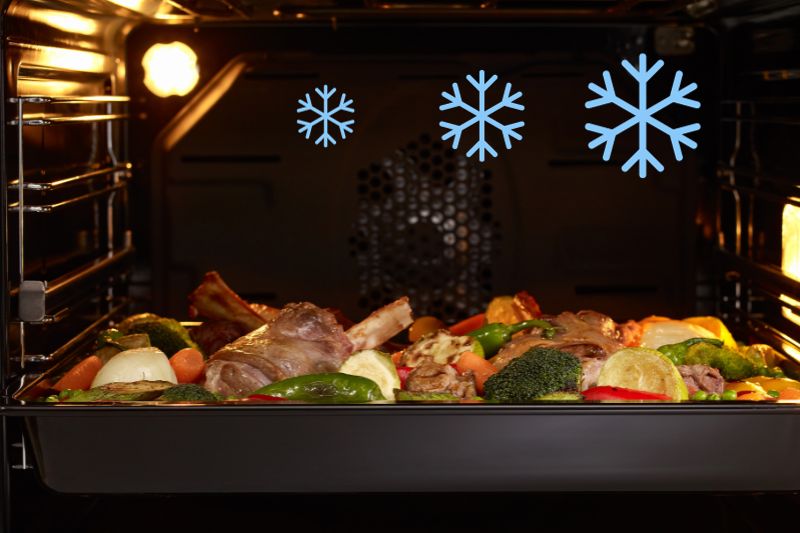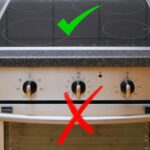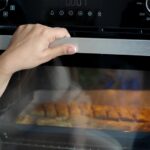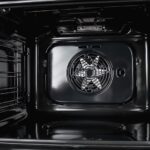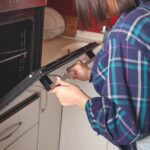Few things are more frustrating than a malfunctioning electric oven, especially when you’re ready to cook a delicious meal.
If your electric oven isn’t getting hot enough, there could be various causes behind the issue.
Here, we explore the most common reasons your oven may not be getting hot enough and provide solutions for each problem.
Before attempting any oven troubleshooting, consider your safety. While inspecting internal elements, ensure your oven is unplugged from the mains and the power source is turned off.
If you’re uncomfortable with these steps or lack experience, contact a professional technician to help.
Why Is My Electric Oven Not Heating Up?
Reason 1: Faulty heating element
The primary component responsible for heating your electric oven is the heating element.
A conventional electric oven typically has two heating elements, one at the top and another at the base.
When either or both elements malfunction, your oven won’t heat correctly.
Here’s how to inspect the heating element to know whether it needs replacing:
- Turn your electric oven off, then locate the heating elements on the top and bottom of your oven. They are made of metal and typically shaped like a bending wire or ribbon.
- Turn your oven on to let the heating element get hot. Observe the element for a red glow, which indicates it is heating up.(Do not touch the heating element, as you will burn yourself.
- If the heating element doesn’t heat up or reach the desired temperature, use a multimeter to test for continuity. You’ll need to remove the elements from the oven to do this.
- Turn off the oven, let it cool down, and disconnect the power before removing the elements for testing. If the test reveals no continuity, you must install a new heating element.
Reason 2: Faulty wiring
If the continuity test came back positive but the heating element isn’t working, it might be due to faulty wiring.
The heating element will not turn on and get hot without an electrical input. To inspect the wiring and replace it if needed, follow these steps:
- Turn your oven off and locate the heating element/s, as you did in the previous step.
- Examine the wiring connecting the heating element to the main control board and power supply. If you find any frayed or damaged wiring, replace it.
- After replacing the wiring, turn the oven back on to check if the problem is resolved. If it isn’t fixed, there might be something else wrong with your electric oven.
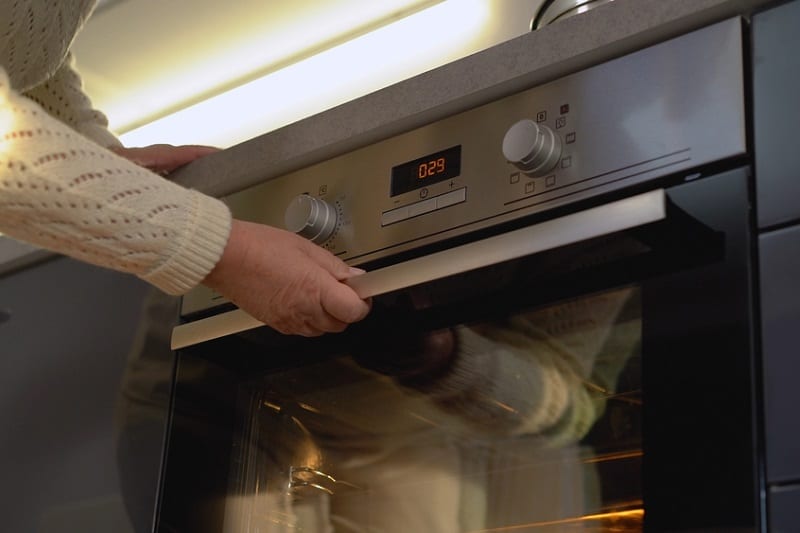
Reason 3: Faulty power supply
If the heating element still won’t heat but all wires are connected securely, you need to look further down the line to the power supply.
Most electric ovens require two legs of 120 volts (240 volts total) to operate correctly. If the power supply is faulty, your oven won’t get hot.
To inspect the power supply, you will need a couple of tools: a multimeter and a voltage tester. Once you have these to hand, follow the steps below:
- Find the power outlet that connects to your oven (usually located behind or near the oven). If you can’t locate the outlet, you might need to pull the oven out from the wall to access it.
- Set your multimeter to measure AC voltage. In this case, you’re looking for 220 volts. Then, insert the multimeter probes into the power outlet. The red probe typically goes into the smaller slot of the outlet, while the black probe goes into the larger slot.
- Turn on the power at the circuit breaker and check the voltage by reading the multimeter display. It should show a voltage reading close to 220 volts. If the multimeter reading shows a significantly lower voltage or none at all, you may have a problem with your electrical supply.
- If you’ve checked the power outlet and found no issues, examining your home circuit breaker panel is a good idea. Look for the circuit breaker labelled for your oven and ensure it hasn’t tripped. If it has, reset it by turning it off and back on.
- After confirming that the power supply is functioning as expected and resetting the circuit breaker if necessary, plug your oven back in and turn it on to see if it heats properly.
Reason 4: Faulty thermal fuse
Some ovens have a thermal fuse. This is a safety device designed to open and cut off power to the oven if it overheats.
Like all fuses, the thermal fuse can blow. If this fuse has blown, your oven won’t work.
To inspect and replace the thermal fuse, turn your oven off and then follow these steps:
- Locate the thermal fuse in your oven, referring to the user manual if necessary. It’s usually at the back near the control board (you may need to remove the back panel for access).
- Carefully remove the fuse from its housing and insert the multimeter probe into either end of the fuse. Test the fuse for continuity using your multimeter.
- The fuse is functional if the multimeter makes a continuous beep. If not, it has failed the continuity test. You need to replace the thermal fuse with a new one.
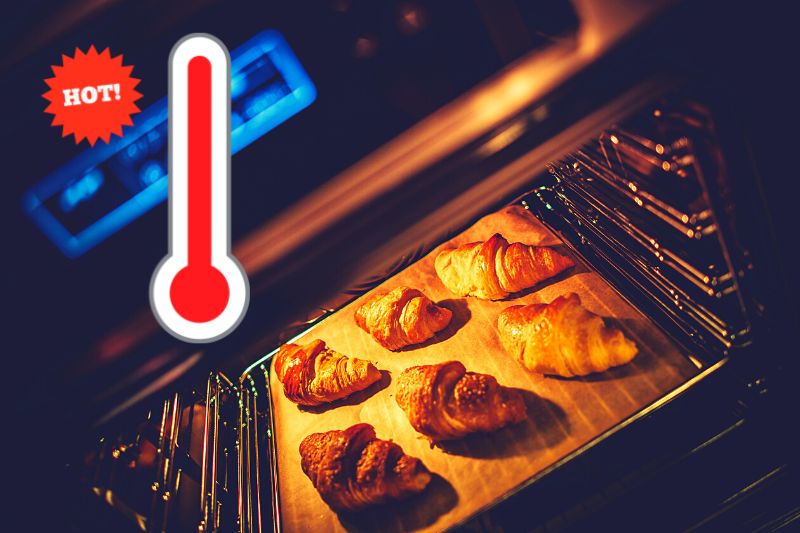
Reason 5: Faulty thermostat
Most electric ovens use a thermostat to ensure the oven stays at the desired temperature.
To do this, the thermostat sensor continually monitors the temperature inside the oven and compares this to the temperature you have set. This information is fed back to the heating elements, telling them to cool down or heat up.
If the thermostat is faulty, it can affect your oven’s heating. It might not be properly calibrated, or there might be something wrong with the sensor that makes it unable to measure the internal oven temperature accurately. Alternatively, there might be an issue with the feedback pathway.
To test if your oven thermostat is working correctly, you can perform a simple temperature test using a reliable oven thermometer.
Here are the steps you need to know:
- Make sure your oven is empty and clean. Then, place the oven thermometer on the centre rack inside the oven where you typically put your dishes for cooking.
- Set your oven to a specific temperature, such as 200°C. Allow the oven to preheat for at least 20 to 30 minutes to ensure the oven has reached the desired temperature.
- Once the oven reaches 200°C (or whatever temperature you set), check the reading on the oven thermometer. Compare this reading to the set temperature on your oven’s thermostat to see if the oven temperature is accurate.
- If the oven temperature matches the set temperature, your thermostat is functioning correctly. If the oven temperature displayed by the oven thermometer significantly differs from the set temperature on the thermostat, this indicates a problem.
If the thermostat is not maintaining the correct temperature, you can decide whether to make adjustments or contact a technician to address the issue.
Some ovens allow you to calibrate or adjust the thermostat to align with the correct temperature. Refer to your oven’s user manual for instructions on how to do this.
Reason 6: Defective control board
Issues with the control board can manifest in many ways. You might have unresponsive controls, error codes, or inconsistent temperatures.
A control board problem can result in the oven not heating correctly or not heating at all, especially if you’ve checked the heating elements and thermostat are in good working order.
The first step is to reset the defective control board and see if this helps. Unplug your oven from the electrical outlet or turn off the circuit breaker for a few minutes.
Then plug it back in or switch the breaker back on. Control board issues can sometimes be temporary, and a reset may resolve them.
If this reset doesn’t work, replacing the main control board may be necessary. However, this is a complex and costly fix. It’s advisable to seek a second opinion from a technician or consider purchasing a new oven.
If you’re in the market for a new oven, you can find some of the best products available in the UK by clicking the links below:
- Best Built-in Double Ovens
- Best Built-in Single Ovens
- Best Self-Cleaning Ovens
- Best Electric Double Ovens
- Best Built-Under Double Ovens

Hannah is a freelance content writer and self-proclaimed foodie. When Hannah isn’t sitting tapping at her laptop, you’ll probably find her in the kitchen. As an ex-chalet host, she’s used to cooking four-course meals for 10+ people and loves feeding friends and family whenever possible.

